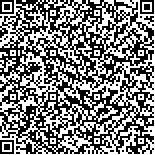| 摘要: |
| The advent of convolutional neural networks has led to remarkable progress in dense stereo labeling problem, achieving
superior performance over the traditional methods. However, the ill-posed nature of stereo matching makes noise (outliers)
in winner-takes-all (WTA) disparity maps inevitable. This paper presents a robust statistical approach to noise detection
and refinement of WTA disparity maps. In the context of noise detection, the input noisy WTA disparity map is segmented
into regular grid cells (regions) with the aim of leveraging Markov random field (MRF) to infer candidate disparity labels.
However, there are two key problems: there can be large severe outliers in the regions; second, the regular partition process
may produce regions with mixed disparity distributions. To overcome these problems, we optimize a robust objective function
over the segmented disparity map. By obtaining the optimal solution of the objective function through a maximum a posteriori
estimation in a probabilistic model, we are able to infer MRF candidate disparity labels. We then apply a soft-segmentation
constraint on the estimated MRF candidate disparity labels to describe and detect outliers in the disparity map. Next, an
edge-preserving statistical inference that leverages the joint statistics of the disparity map and its guidance reference image
is used to select correct candidate disparity for each detected outlier. Finally, a weighted median filter is applied to remove
small spikes and irregularities in the resulting disparity map. Rigorous and comprehensive experiments showed that the
proposed method is distributionally robust and outlier resistant, and can eff ectively detect and correct outliers in disparity
maps. Middlebury evaluation benchmark validated the competitive performance of the proposed method. |
| 关键词: Stereo matching · Disparity enhancement · Robust statistics · Markov random field |
| DOI:https://doi.org/10.1007/s11768-020-00014-y |
|
| 基金项目:This work was supported by the 2020 Guangdong International Cooperation Project (No. 2019A050510007). |
|
| Robust statistical approach to stereo disparity maps denoising and refinement |
| James Okae,Juan Du,Yueming Hu |
| (School of Automation, South China University of Technology, Guangzhou, 510640, Guangdong, China) |
| Abstract: |
| The advent of convolutional neural networks has led to remarkable progress in dense stereo labeling problem, achieving
superior performance over the traditional methods. However, the ill-posed nature of stereo matching makes noise (outliers)
in winner-takes-all (WTA) disparity maps inevitable. This paper presents a robust statistical approach to noise detection
and refinement of WTA disparity maps. In the context of noise detection, the input noisy WTA disparity map is segmented
into regular grid cells (regions) with the aim of leveraging Markov random field (MRF) to infer candidate disparity labels.
However, there are two key problems: there can be large severe outliers in the regions; second, the regular partition process
may produce regions with mixed disparity distributions. To overcome these problems, we optimize a robust objective function
over the segmented disparity map. By obtaining the optimal solution of the objective function through a maximum a posteriori
estimation in a probabilistic model, we are able to infer MRF candidate disparity labels. We then apply a soft-segmentation
constraint on the estimated MRF candidate disparity labels to describe and detect outliers in the disparity map. Next, an
edge-preserving statistical inference that leverages the joint statistics of the disparity map and its guidance reference image
is used to select correct candidate disparity for each detected outlier. Finally, a weighted median filter is applied to remove
small spikes and irregularities in the resulting disparity map. Rigorous and comprehensive experiments showed that the
proposed method is distributionally robust and outlier resistant, and can eff ectively detect and correct outliers in disparity
maps. Middlebury evaluation benchmark validated the competitive performance of the proposed method. |
| Key words: Stereo matching · Disparity enhancement · Robust statistics · Markov random field |

